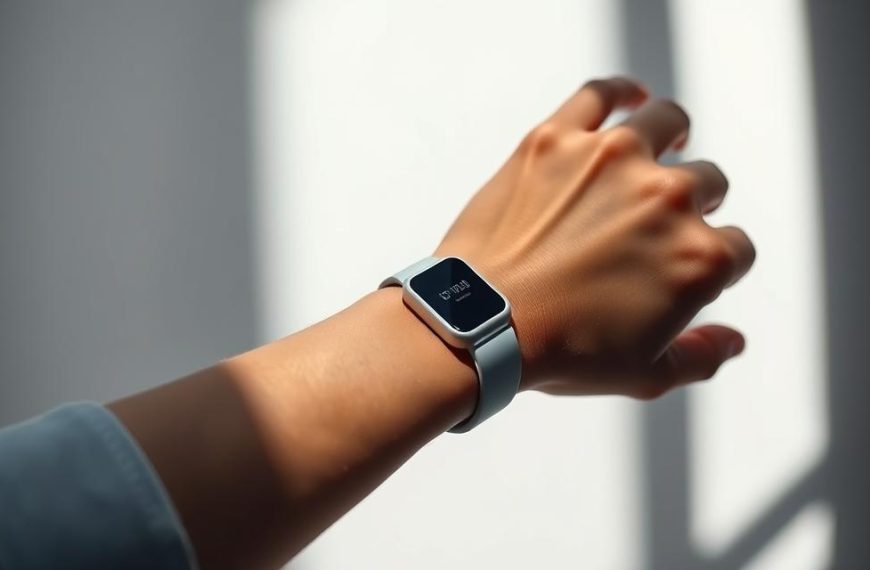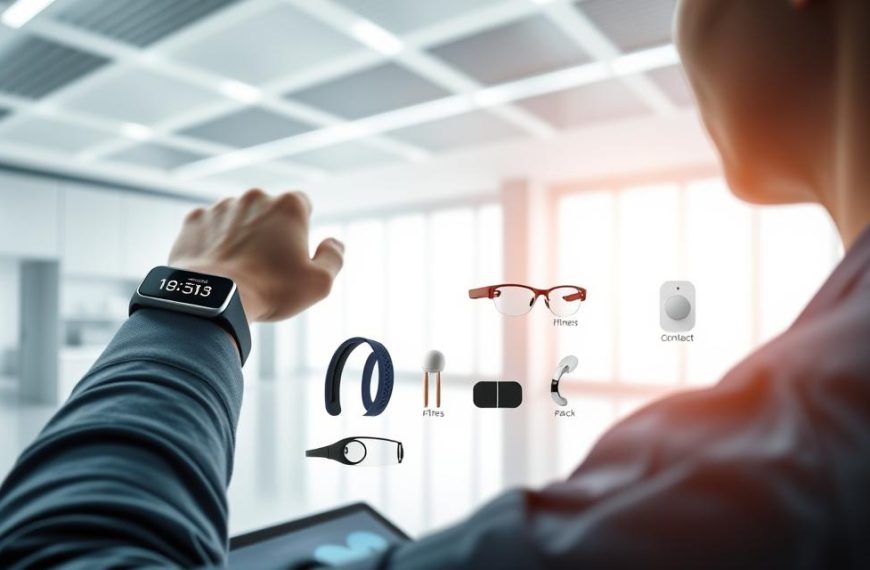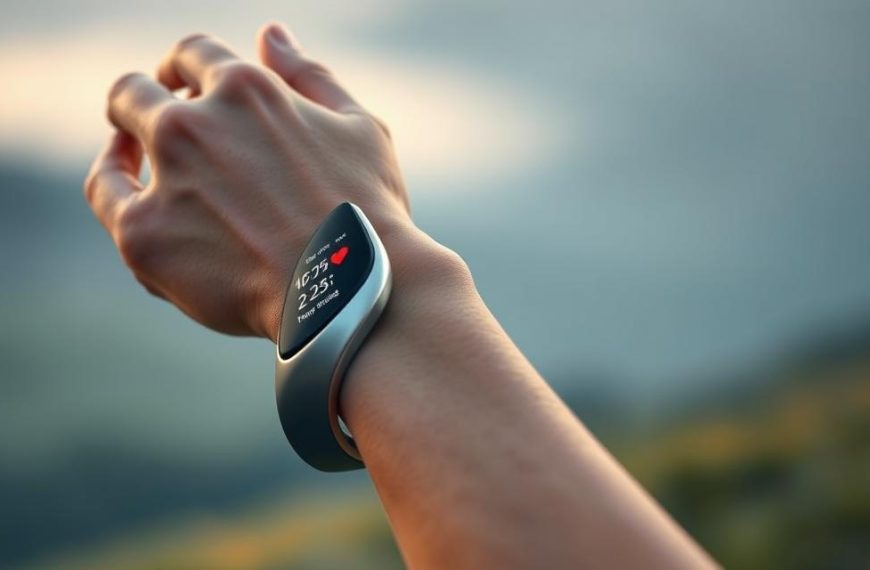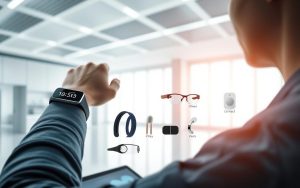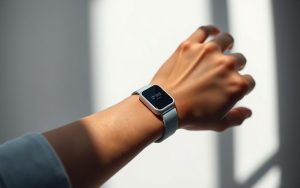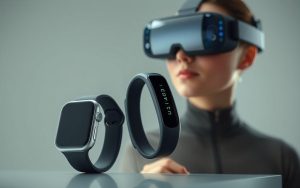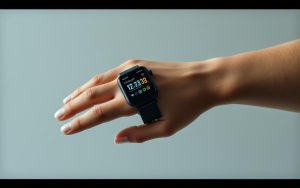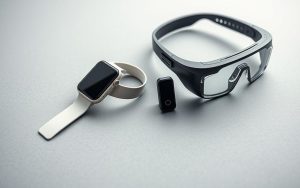The global market for wearable devices is booming, projected to reach $256.4 billion by 2026. These gadgets, like fitness trackers and smartwatches, are revolutionizing the way we monitor health. From tracking heart rate to analyzing sleep patterns, they provide valuable insights into our well-being.
However, this convenience comes with a cost. Many users unknowingly share sensitive health data publicly through apps, exposing themselves to potential risks. Unencrypted Bluetooth connections and phishing scams, like the $33,850 NCRB pop-up fraud, highlight the vulnerabilities in these devices.
While these tools offer significant health benefits, the lack of robust security measures raises concerns. Understanding the risks and taking proactive steps to protect personal data is essential for users navigating this evolving landscape.
Introduction to Wearable Technology and Privacy Concerns
The rise of wearable tech has brought both innovation and privacy challenges to the forefront. These devices, including smartwatches, fitness bands, and medical-grade sensors, collect a wide range of personal information. From tracking sleep patterns to monitoring heart rate, they offer valuable insights into daily activities and overall health.
Common data types collected by these gadgets include geolocation, biometrics, and even social connections. This information flows from the device to apps, then to the cloud, and often to third parties. Many users are unaware that their data is shared beyond the app itself.
One significant issue is the “public-by-default” settings on many platforms. These settings can expose sensitive details, such as workout routes or home addresses, to unintended audiences. A recent study revealed that 41% of wearable apps share data with advertisers, raising concerns about how personal information is used.
Another critical concern is the lack of medical-grade security in consumer devices. While these gadgets collect health-related data, they often fall short of the stringent protections required for medical information. This distinction highlights the difference between “unPHI” (unprotected health information) and HIPAA-protected data.
| Data Type | Examples | Risks |
|---|---|---|
| Geolocation | Workout routes, home addresses | Exposure to unintended audiences |
| Biometrics | Heart rate, sleep patterns | Potential misuse by third parties |
| Social Connections | Contacts, messaging history | Data breaches and phishing scams |
Understanding these risks is the first step toward safeguarding personal information. As wearable devices continue to evolve, users must stay informed about the privacy implications of their data.
How Can Wearable Technology Affect Your Privacy?
Wearable devices collect vast amounts of personal data, raising significant privacy concerns. These gadgets continuously monitor activities, creating detailed profiles of users’ lives. From heart rate to sleep patterns, the information gathered can reveal sensitive details about daily routines and mental health.

Data Collection and Storage
Continuous monitoring by wearables results in permanent health and behavioral profiles. Metadata, such as exercise times and sleep data, can expose daily routines and mental states. For example, Fitbit data has been used in insurance disputes, highlighting the risks of sharing such information.
Storage of this data is another critical issue. A staggering 68% of wearable makers lack data encryption, leaving user profiles vulnerable to cloud breaches. These breaches can expose millions of users’ personal details, making robust security measures essential.
Bluetooth and Security Vulnerabilities
Bluetooth connections in wearables are often unencrypted, making them susceptible to eavesdropping attacks. Exploits requiring less than three feet of proximity can compromise sensitive data. Additionally, public charging stations pose risks like “juice jacking,” where devices are compromised during charging.
Spoofed firmware updates are another threat. Malicious actors can install malware by disguising updates as legitimate. These vulnerabilities underscore the need for enhanced security protocols in wearable devices.
| Data Type | Examples | Risks |
|---|---|---|
| Geolocation | Workout routes, home addresses | Exposure to unintended audiences |
| Biometrics | Heart rate, sleep patterns | Potential misuse by third parties |
| Social Connections | Contacts, messaging history | Data breaches and phishing scams |
Understanding these risks is crucial for users of wearable devices. By staying informed and taking proactive steps, individuals can better protect their personal information from potential threats.
Risks Associated with Wearable Devices
Wearable devices, while innovative, pose significant risks to user privacy and security. These gadgets collect sensitive personal data, making them attractive targets for unauthorized access and breaches. Understanding these risks is crucial for users to protect their information effectively.
Unauthorized Access and Data Breaches
One of the most pressing concerns is unauthorized access to personal data. Devices often store unencrypted health histories, which can be stolen or exploited. For example, workout selfies or route maps shared on social media can be used in social engineering attacks.
Corporate wellness programs also raise red flags. Many companies sell aggregated employee data to third parties, often without explicit consent. This practice highlights the lack of transparency in how personal information is handled.
Real-world cases underscore these risks. The Strava incident in 2018 revealed the locations of military bases and personnel through shared fitness data. Similarly, a 2023 Navi Mumbai extortion attempt involved a $33,000 scam exploiting wearable device data.
Lack of Regulatory Oversight
Regulatory gaps further exacerbate the risks. Current laws like GDPR and HIPAA provide some protection but fall short in addressing the unique challenges posed by wearable devices. For instance, only one sleep tracker company acknowledges HIPAA compliance.
Privacy policies often use vague language, with 89% employing terms like “may share” without clear explanations. This ambiguity leaves users uncertain about how their data is used or shared.
Cross-border data jurisdiction conflicts add another layer of complexity. Differences between regulations like GDPR and the DPDP Act create challenges in enforcing consistent privacy standards globally.
| Risk Type | Examples | Impact |
|---|---|---|
| Unauthorized Access | Theft of unencrypted health data | Identity theft, social engineering |
| Data Breaches | Strava incident, Fitbit lawsuit | Exposure of sensitive information |
| Regulatory Gaps | Vague privacy policies, cross-border conflicts | Inconsistent data protection |
For a deeper dive into the ethics of wearable devices, explore how these risks are shaping the conversation around privacy and security.
Protecting Your Privacy While Using Wearable Technology
Taking control of your personal information starts with understanding the tools at your disposal. Wearable devices offer incredible benefits, but they also require careful management to ensure your data remains secure. By adjusting settings, navigating policies, and implementing robust security measures, you can significantly reduce risks.

Adjusting Privacy Settings
Optimizing your device’s settings is the first step toward safeguarding your privacy. Disable automatic social media sharing features to prevent unintended exposure. Limit app permissions to core functions only, denying access to contacts or unnecessary data. Enabling automatic activity deletion after 30 days ensures older information doesn’t linger unnecessarily.
Understanding Privacy Policies
Navigating privacy policies can be daunting, but it’s essential for protecting your data. Use browser extensions like Terms of Service; Didn’t Read (TOSDR) to simplify complex documents. Identify clauses related to “data monetization” in End User License Agreements (EULAs). Demand GDPR-style Data Subject Access Requests (DSARs) regardless of your location to maintain control over your information.
Using Passwords and Software Updates
Strengthening your device’s security starts with robust passwords. Replace 4-digit PINs with BIP-39 passphrases for enhanced protection. Schedule manual firmware checks, as auto-updates are often delayed. Use Faraday pouches during sensitive meetings to block wireless signals and prevent unauthorized access.
“Two-factor authentication reduces breach risk by 99%, making it a must-have for any device.”
Advanced tactics include creating burner emails for device registration and using VPNs on companion smartphones. Regularly audit connected third-party apps to ensure they meet your privacy standards. By implementing these measures, you can enjoy the benefits of wearable devices while keeping your data secure.
Conclusion
As the use of connected devices grows, understanding privacy risks becomes essential. Mastering settings, staying informed about policies, and regularly updating software are key measures to safeguard data. Emerging standards like ISO/IEC 27043 for wearable forensics aim to enhance security and compliance.
Looking ahead, increased FTC actions against health data brokers and edge computing risks in next-gen AR devices will shape the landscape. Advocating for Right to Repair laws can empower users to conduct security audits, ensuring better protection.
Resources like the EFF Surveillance Self-Defense guide and Have I Been Pwned? offer valuable tools for managing privacy. Implementing four or more measures reduces risks by 82%, making proactive steps crucial in this evolving technology era.



